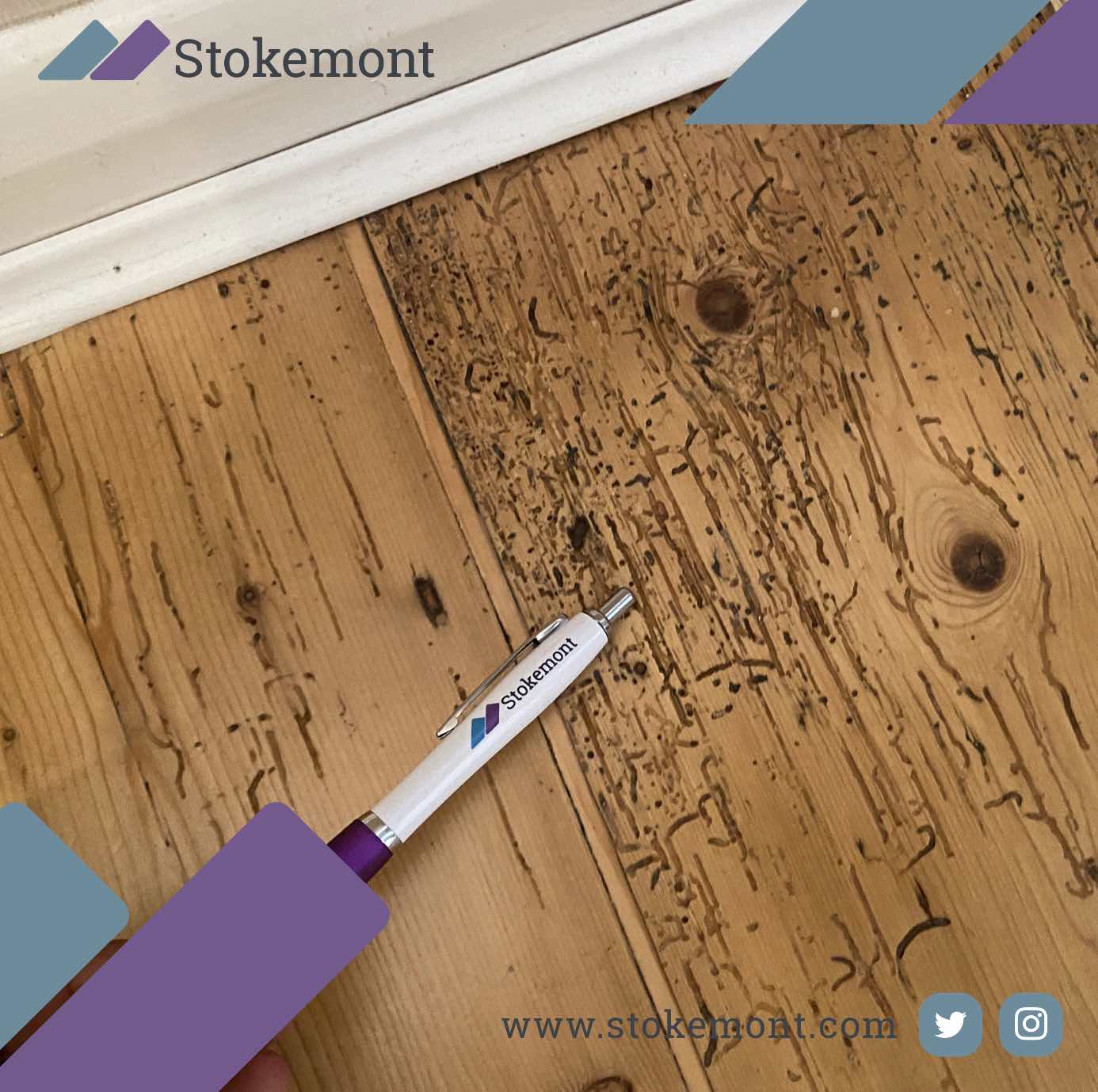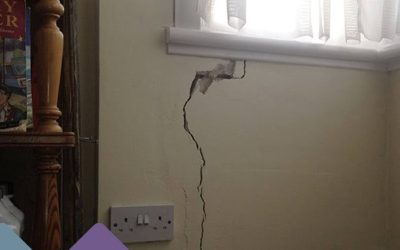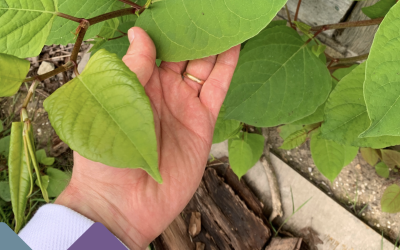Hello and welcome to a new instalment of Stokemont’s blog series. The focus of today’s post is on the various timber pests which can be found in properties.
Due to the widespread use of timber within construction the impact of pests within properties can be catastrophic and they certainly should not go untreated. If left untreated, these pests can cause significant damage resulting in structural failure of the building.
A worrying aspect about a timber pest infestation, is that these pests can be present with the timber elements of your house for years until their impacts start to show. Essentially, meaning that they can be causing significant damage to the structure of your property before you even have the chance to act on it.
How to identify a timber pest infestation?
There are multiples signs that can signal an on-going infestation including the following:
- New holes within timber, typically 1-2mm in diameter
- New holes in flooring
- Dust surrounding holes on timber
- Presence of damp within timber, this is likely to attract wood boring beetles
- Crumbly edges to boards and joists
Where can you find timber pests?
- Floorboards
- Joists & beams
- Roof timbers
- Joinery & Structural timbers
What are the most common forms of timber pests?
Common Furniture Beetle
These are the most common form of wood boring insects in the UK and they are typically identified as a black/brown colour and vary in size between 2.5mm-5mm.
The Common Furniture Beetles prefer dead branches and fallen trees and for this reason within properties they target seasoned wood rather than fresh or live wood.
An infestation of Common Furniture Beetles can be identified by small, 1.5-2mm wide holes which are surrounded by fine dust.
Death watch Beetle
The Deathwatch Beetle has a preference for partially decayed hardwoods such as Oak. Due to this the Deathwatch Beetle is regularly discovered within historical buildings such as churches.
These beetles are slightly larger than Common Furniture Beetles and are usually between 5-8mm long.
The damage caused by Deathwatch Beetle is noticeably different to that of a Common Furniture Beetles due to the larger 3mm holes. Furthermore, there are also small pellets present within the dust surrounding the holes.
An infestation of Deathwatch Beetle is particularly difficult to handle as these insects tend to burrow deep within the timber meaning that insecticide is unlikely to reach them.
House Longhorn Beetle
These beetles are primarily found in the Southern areas of the country and are more prominently discovered within roofing timbers.
An adult beetle can be anywhere from 7-25mm and they are the largest of the commonly found wood boring beetles.
As these beetles eat their way through timber, they leave behind holes which are between 6-10mm in diameter. Compared to the other beetles discussed so far, the House Longhorn leaves significantly larger holes.
Wood Boring Weevil
This species is the second most common form of wood boring beetle in the UK. They have a Reddish-brown to black colour and are typically 2.5-5mm in length. The Wood Boring Weevil has a distinctive long snout and a long flat body.
They are more drawn to decaying softwood and hardwood which is infested with fungus.
Within properties they are regularly found in areas such as cellars, basements and other poorly ventilated areas within a property.
It is relatively easy to diagnose a Wood Boring Weevil infestation as they create tunnels which appear along the grain of the wood.
How do you treat a timber pest infestation?
In order to eliminate a timber pest infestation, the areas of timber should be chemically treated. Fortunately, some timber pests only impact the surface of the timber which means that these can easily be treated by either brushing or spraying the affected area.
However, some timber pests burrow deep within the timber which makes it slightly more difficult. For example, with a death watch beetle infestation you would need to inject the chemicals into the exit holes created by the beetles as well as undertaking surface treatment.
If you are wondering whether your property currently has a timber pest infestation, please feel free to give one of our experienced surveyors a call to discuss by clicking here.




